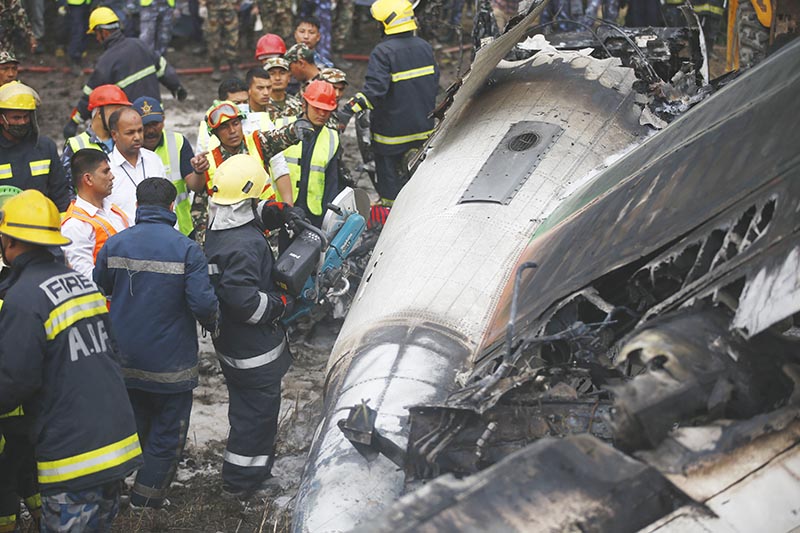More lives could have been saved after TIA plane crash?
Kathmandu, March 16
Glaring deficiencies in manpower planning at the Civil Aviation Authority of Nepal, especially, training and equipage, have come to the fore in light of the recent US-Bangla Bombardier Dash-8 crash at Tribhuvan International Airport.
More lives could have been saved from the burning wreckage of the aircraft had the firemen been equipped with proper personal protective equipment for the rescue and response operation, according to stakeholders.
One of the firefighters involved in the rescue and response mission told THT that they couldn’t enter the active fire in and around the aircraft due to lack of suitable entry suits, which are mandatory for such hazardous situations, though rescue and firefighting foam tenders had reached the crash site within three minutes of the crash as mandated by the International Civil Aviation Organisation.
“We had to struggle for over half an hour to reach the intensely burning wreckage due to lack of aluminised fire entry suits,” he said.
He added that most of the 22 lives saved from the scene were from areas that didn’t catch fire.
Doctors at Tribhuvan University Teaching Hospital who conducted post-mortem told THT that most of the 49 deaths were attributed to inhalation of toxic fumes, implying that the occupants remained alive despite the high intensity impact.
“We managed to save lives of mostly those passengers who had luckily escaped from the fire,” another rescuer told THT.
Officials at the CAAN confirmed that the firefighting rescue squad was only issued fire proximity suits that were not suitable for entering active fire areas at TIA. “They would have saved more lives had they donned fire entry suits,” a CAAN official said.
TIA stated that the ill-fated plane crash-landed at 2:18pm on Monday and immediately burst into flames. “The fire was controlled at 3:00pm while all bodies were retrieved by 5:45pm,” TIA said in a statement. Bangladeshi citizen Shahreen Ahmed, 29, who survived the crash, said he saw other passengers burning, shouting and falling down.
Late response to crash-landing of BS-211 flight shows the actual state of emergency rescue and response efforts in the country’s sole international airport, an airliner pilot said. TIA management, however, claims that the aerodrome is certified for handling Category 9 aircraft (wide body jets). “Poor handling of an accident related to Category 5 belies that claim,” the senior captain added.






